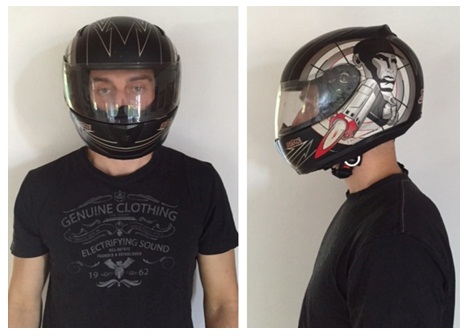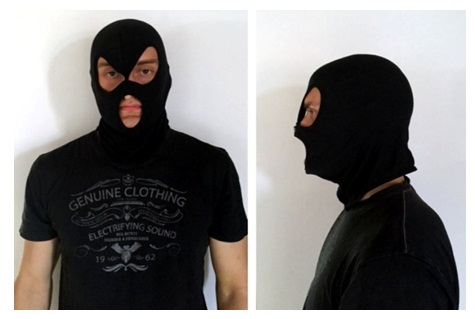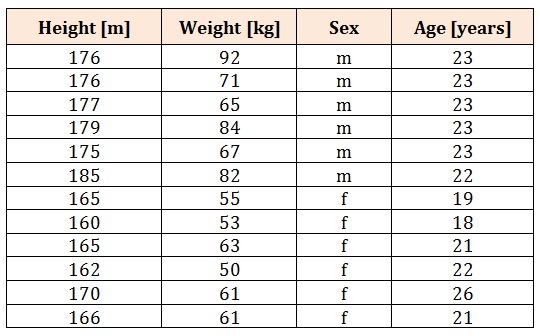
Citation: Ludwig O, et al. Gait Analysis for Identification of Perpetrators – Impact of Masking on Gait. Int J Forens Sci 2016, 1(3): 000115.
*Corresponding author: Ludwig Oliver, Saarland University, Institute of Sports Science, Germany, Email: oliver.ludwig1@uni-saarland.de
Identification of perpetrators by means of closed-circuit TV (CCTV) increasingly gains in importance. In many crime scenarios, the perpetrator is masked, which could lead to limitations of the field of vision. This study aims at examining potential changes of forensically relevant gait parameters caused by masking. 12 persons in short clothes repeatedly walked along a 6 m walkway without masking and wearing a balaclava and full-face motorcycle helmet. Relevant joint angles were marked on skin and clothes, and the gait pattern was filmed at 50 Hz. Minimum and maximum knee and hip angles as well as the stride length were determined based on frames, and statistically compared between the tests situations. No significant differences were identified between the masking situations examined. With undisturbed movement, slight restrictions of the field of vision caused by masking did not result in a change of the angle parameters of the leg or the stride length and should therefore not necessarily affect the gait pattern quality required for forensic analysis.
Keywords: Gait Analysis; Gait biometrics; CCTV; Identification
Gait analysis is a technical, scientific procedure used for describing the human gait pattern and examining it for characteristic idiosyncrasies [1]. One modern aspect of gait analysis is its application in the biometric identification of individuals [2,3]. The identification of perpetrators by means of closed-circuit TV (CCTV) becomes more and more important [4,5] because, on the one hand, a growing number of public and private spaces are video-monitored, and, on the other hand, analysis technology improves continuously. When analyzing video footage, the forensic expert is interested in many factors, such as, clothes, facial recognition, anthropometric measurements like height and leg length, or the gait pattern of a suspect [6-11]. Cunado et al. [12] for example, performed comprehensive checks using Fourier analyses and pointed out the potential of leg movement in biometric examinations. They stated that it may be possible to apply this technology in forensic fields, such as crime detection. This would, for example, include the identification of persons based on their gait [13,14], possibly in combination with other physiological features [15]. The gait pattern analysis applies numerous parameters, especially stride length, cadence, individual joint angles, or angular speeds [16]. Recent studies have shown that the inter-individual variability of the gait pattern is high and complicates identification [17]. This study deals with the influence of masking on the gait pattern. In many crime scenarios, the perpetrator is masked. This almost inevitably results in a restriction of their field of vision. It has been scientifically examined that restrictions of the field of vision can lead to changed gait patterns [18,19]. Seeing plays a prominent role in controlling movement in general, and in particular in identifying potential disturbances for the walk of a person (obstacles, unevenness, dirt [19-21] ) or in difficult terrain [18]. Patla lists a number of interactions of visual perception and human movement [22]. Impairment leads to different adaptation or avoidance behavior, such as changes in stride length, walking direction, or walking speed. This study therefore aimed to examine potential changes in forensically relevant gait parameters caused by masking.
MethodsTest subjects
12 persons participated in the study (Table 1).
The gait analyses were carried out under laboratory conditions in order to avoid negative effects caused by insufficient lighting, unfavorable perspective distortion, or poor camera technology. Reflective marker points (12 mm diameter) were fixed to the shoulder, hip (trochanter major), knee joint, and the external ankle (malleolus lateralis).
WalkwayThe test subjects were wearing short clothes and walked along a walkway approximately 6 meters long. The video footage was taken at 50 frames a second with a camera (Sony HDR-XR 520, 1920 x 1080 pixels) mounted on a tripod at a height of 1.50 meters. Depending on the walking speed, approximately 30 to 40 single frames were recorded per gait cycle. The distance of the camera to the walkway was about 4 meters. The camera was aligned orthogonally to the walkway.
Test procedureFor each test, the test subjects walked five times along the walkway at a speed they selected. The following tests were performed consecutively:
1. ‘Normal’: walking without restricted field of vision
2. ‘Mask’: walking with a balaclava: the test subjects wore a tight balaclava (Normani,Kaufungen, Germany) with holes in the mouth and eyes area
3. ‘Helmet’: walking with a helmet: the test subjects wore a full-face motorcycle helmet with a closed, transparent visor (Figure 1).
Data procession and analysisThe video files were transferred to a PC. For each test, a video sequence was selected from each test subject, during which a step cycle (from setting down the right heelto setting down the right heel again) was easy to represent. Using the Dartfish ProSuite 6.0 (Dartfish Inc., Switzerland) software, hip angle and knee angle were determined during an entire step cycle. Additionally, the step length (heel distance) was measured based on a calibration distanceon the walkway (Figure 2).
To compare the 3 test situations, the maximum and minimum knee and hip angle as well as the heel distance data were used. Repeated ANOVA (XLSTAT version 2016.02, Addinsoft) were calculated for statistical analysis purposes. Sphericity was verified using the sphericity test by Mauchly and Greenhouse-Geisser’s epsilon, and, where required, the F values were corrected according to Greenhouse-Geisser. Post-hoc paired comparisons were performed applying the Tukey test.The significance level was set to p<0.05.
ResultsThe minimum and maximum knee or hip angles and the stride length did not differ significantly in the three test situations (Table 2).
Only for the maximum knee angle, ANOVA showed a significant result (Table 3), which, however, was not confirmed during the post-hoc tests (Table 4).
DiscussionTo identify persons on CCTV recordings, gait pattern analyses are taken into consideration [3]. Even if new studies were able to show that a definite identification, like with finger printing, is impossible with gait pattern analyses [4,17], it is still possible to exclude groups of persons, for example through distinctive gait pattern features [3]. This forensic approach presupposes that variables that have the potential to influence the gait pattern are known [17], which, in particular, could include restrictions of the field of vision caused by masking. A visual system that works without limitations is necessary for an undisturbed gait pattern. To ensure stable movement, humans visually reconnoiter their environment in usually less than 10% of the movement duration when moving on even ground, and in more than 30% of the movement duration in situations in which it is impossible to set one foot after another without limitations or risk (intermittent visual sampling‘) [23]. In order to be able to respond to disruptive elements when walking, obstacles must be perceived and identified as such in time [20]. Adaptations of stride length and step height (und thus of the knee and hip angles) to pass an obstacle are possible if step planning is performed one step ahead and the person visually analyzes the environment carefully [20,21]. Evasive maneuvers must be planned earlier in the step process, however. During movement, persons can be distracted and their alertness is reduced, which in turn reduces the time to implement ‘avoidance strategies’. Particularly in this context, potential restrictions of the field of vision caused by masking must be assessed critically. In the course of this study, direct affects caused by masking on the gait parameters examined were not found. This means that an important potential disturbance factor was examined, which could have made identification of persons in CCTV footage based on gait pattern analyses more difficult. Nevertheless, tests by Patla, et al. show the strongest impact of the visual system on gait parameters when obstacles must be evaded [20,23]. In crime scenarios this is probably often the case; perpetrators can hardly get to their target in a straight line. Therefore, the study is naturally subject to limitations because undisturbed, straight walking on an obstacle-free walkway was examined. Another limitation is that the restriction of the field of vision by a balaclava can be neglected if the eye holes are large enough. Restrictions of the field of vision can also be reflected in more complex gait parameters (such as angle speeds and accelerations [16]), but this study only included parameters that were easy to evaluate.Therefore, further research is required to examine the potential effects of masking on those gait parameters that are important for forensic analysis.
ConclusionsWith undisturbed movement, a restriction of the field of vision caused by simple masking does not result in a change of the angle parameters of the leg or the stride length and should therefore not necessarily affect the gait pattern quality required for forensic analysis.
AcknowledgmentThe authors wish to thank Monika Schutz for translating the manuscript.

Figure 1 (a): Masking with motorcycle helmet

Figure 1 (b): Masking with motorcycle balaclava.

Figure 2: Experimental setup with walkway, high contrast background, markers on the skin and knee and hip angle.

Table 1: Analysis of Test Subjects.

Table 2: Angle and length parameters in the three test situations.

Table 3: ANOVA: intra-individual effects between the three test situations.

Table 4: Post-hoc paired comparisons (Tukey test) for knee max.
Chat with us on WhatsApp